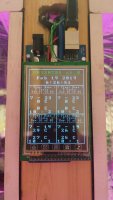DrewT
Well-Known Member
Greetings fellow DIY'ers! I've just finished building an open source multi-purpose controller. Although I learned a lot, the resulting device is more proof-of-concept then finished solution.

I'm in the planning stages of the next project iteration and would appreciate your feedback. Specifically:
 . If your perfect answer isn’t listed feel free to suggest in comments. Any responses are much appreciated, thanks for your time!
. If your perfect answer isn’t listed feel free to suggest in comments. Any responses are much appreciated, thanks for your time!
I'm in the planning stages of the next project iteration and would appreciate your feedback. Specifically:
- What features do you find most useful about the controllers you use today?
- What features do you wish you had or would be your first choice to add?
 . If your perfect answer isn’t listed feel free to suggest in comments. Any responses are much appreciated, thanks for your time!
. If your perfect answer isn’t listed feel free to suggest in comments. Any responses are much appreciated, thanks for your time!


 ?
?
